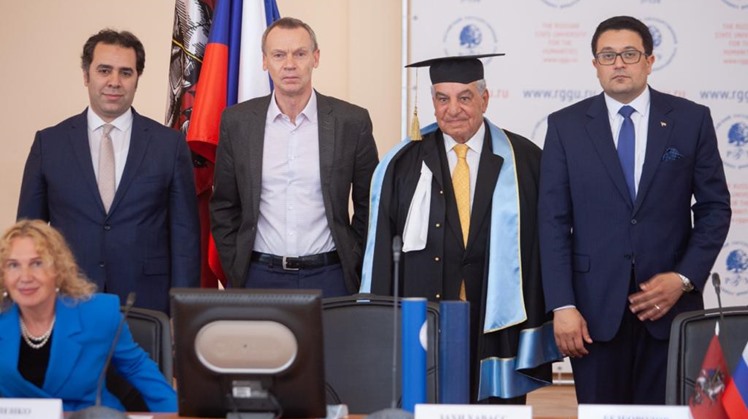In a huge celebration at the Russian University for Human Sciences, Egyptian archaeologist Dr. Zahi Hawass received an honorary doctorate from the university. The university president announced, in the presence of Ambassador Ihab Nasr, Egypt’s ambassador to Russia, and Dr. Mohamed El-Sergany, the Egyptian cultural advisor, that the university council decided to grant Hawass an honorary doctorate because he is more Egyptologists in scientific production, in addition to restoring antiquities and returning the stolen antiquities of Egypt, and participated in the construction of the Grand Egyptian Museum and the National Museum of Egyptian Civilization.
The university president handed Hawass two doctoral degrees, in Russian and English.
It is worth mentioning that the Russian University for the Humanities is the oldest university in Russia and cooperates with 200 universities all over the world. It has 9 museums, the most important of which is the Museum of Egyptian Antiquities. After the honoring, Hawass gave a lecture on the recent archaeological discoveries in Egypt.
Dr. Zahi Hawass gave a lecture on the recent archaeological discoveries in Egypt at the Moscow University for Human Studies in the Russian Federation. The lecture was attended by Ambassador Ihab Nasr, Egypt's ambassador to Russia, Dr. Mohamed El-Sergany, the Egyptian cultural attaché, a delegate from the Ministry of Foreign Affairs, the House of Representatives and many delegates goverment Authorities.
Ambassador Ihab Nasr gave a lecture, then showed a movie about the great archaeologist Zahi Hawass for 8 minutes. After the movie was shown, Dr. Zahi Hawass said: We are now looking for the tomb of Imhotep in Saqqara, and that the mission has already started working in the area, and we are also looking for Queen Nefertiti in Luxor. .
Hawass explained the details of the new archaeological discoveries in the Saqqara area next to the pyramid of King Teti, noting that the Egyptian mission found a 5-meter-long papyrus, a bronze "axe" belonging to an army soldier, as well as some toys, boats, wooden masks, a painting and coffins of the modern state. .
He talked about the lost golden city of Luxor, which dates back to the reign of King Amenhotep III, and continued to be used by Tutankhamun, that is, 3000 years ago.
Hawass explained that work has begun in this area to search for the mortuary temple of King Tutankhamun, because the temples of Horemheb and Ai were previously found, and this city is the largest administrative and industrial settlement in the world. The era of the Egyptian Empire on the west bank of Luxor.
 Thu, Sep. 30, 2021
Thu, Sep. 30, 2021